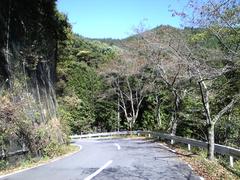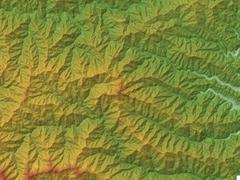
Chichibu Shrine Visiting Hours, Tickets, and Travel Guide in Chichibu, Japan
Date: 04/07/2025
Introduction: Chichibu Shrine’s Historical and Cultural Importance
Chichibu Shrine, centrally located in Chichibu City, Saitama Prefecture, is a vivid expression of over 2,100 years of Japanese religious and community life. Revered as one of the most significant Shinto shrines in the region, it is dedicated to Yagokoro Omoikane-no-Mikoto, the deity of wisdom, and is a celebrated center for local festivals, artistic legacy, and spiritual traditions. The shrine’s renowned Edo-period architecture and masterful wood carvings—some attributed to Hidari Jingorō—draw both history enthusiasts and cultural explorers. As the heart of the world-famous Chichibu Night Festival, a UNESCO-listed event, Chichibu Shrine seamlessly bridges the past and present.
This guide provides a comprehensive overview of Chichibu Shrine’s origins, artistic features, and cultural role, alongside all the practical details needed for your visit: hours, tickets, accessibility, and nearby attractions. For official information and timely updates, refer to the Chichibu Shrine website, Matcha-JP, and Japan Guide.
Table of Contents
- Introduction
- Origins and Early History
- Architectural and Artistic Features
- Religious and Community Significance
- The Chichibu Night Festival (Yomatsuri)
- Visiting Information: Hours, Tickets, and Accessibility
- Getting There
- Nearby Attractions and Activities
- Visitor FAQs
- Visual Gallery (Suggested)
- Conclusion and Call to Action
- References
Origins and Early History
Chichibu Shrine traces its roots back to the reign of Emperor Sujin (97–30 BCE), when Chichibuhiko-no-Mikoto, a local chieftain, enshrined the deity Yagokoro Omoikane-no-Mikoto alongside the mountain god of Mt. Bukō. This act established the shrine as the spiritual guardian of the Chichibu region (Matcha-JP; Chichibu Omotenashi). Over the centuries, the area around the shrine developed into a bustling temple and market town, reflecting its central place in community life.
Architectural and Artistic Features
Edo-Period Architecture
The shrine’s current main sanctuary was rebuilt in 1592 under the patronage of Tokugawa Ieyasu after being destroyed during the Sengoku era. The design is an excellent example of Gongen-zukuri style, uniting the main sanctuary, worship hall, and connecting passageways under a single roof (fun-chichibu.com). This unified structure creates an imposing presence and is recognized as a tangible cultural property of Saitama Prefecture.
Masterful Wood Carvings
Chichibu Shrine is famed for its elaborate woodwork, attributed to Hidari Jingorō and his followers. Notable carvings include:
- Child-Rearing Tiger (Kosodate Tora): Symbolizes protection and nurturing for families.
- Bound Dragon (Tsuru-no-Ryū): Represents water deities and protection from disaster.
- Three Wise Monkeys: Echoes the famous “see no evil, hear no evil, speak no evil” motif.
These vibrant, polychrome carvings, restored every 50 years, embody layers of Shinto symbolism and are best appreciated from the eaves and beams of the main hall (japanrar.com; travel.gaijinpot.com).
Religious and Community Significance
Chichibu Shrine enshrines Yagokoro Omoikane-no-Mikoto as the principal deity, revered for wisdom and intelligence. Unique to this shrine are komainu guardian statues in the form of wolves, reflecting the local reverence for mountain spirits (Chichibu Omotenashi). The shrine is also closely connected to the region’s silk weaving heritage, with the Chichibu Meisen textile tradition showcased during annual festivals (Veronika’s Adventure).
The Chichibu Night Festival (Yomatsuri)
The Chichibu Night Festival, held every December 2–3, is one of Japan’s three great float festivals (Japan Guide). Six ornate floats parade through the city, accompanied by traditional music and culminating in a spectacular fireworks display. This UNESCO-listed event is renowned for its winter celebration, vibrant floats adorned with Chichibu Meisen silk, and deep community participation. The festival is designated as both an Important Intangible and Tangible Folk Cultural Property (Matcha-JP).
Visiting Information: Hours, Tickets, and Accessibility
Visiting Hours:
- Standard opening hours are typically from 8:30 or 9:00 AM to 5:00 PM. During festival periods, hours may be extended; always check the official website for current details.
Admission:
- Entrance to the shrine grounds is free. Special exhibitions or the Chichibu Festival Hall (adjacent to the shrine) may require a ticket (usually 300–500 yen).
Accessibility:
- The main approach and most pathways are paved and suitable for wheelchair users, though some areas have steps or uneven surfaces. Accessible restrooms are available.
Getting There
Chichibu Shrine is a short 3–5 minute walk from Chichibu Station (Chichibu Railway) and about a 10-minute walk from Seibu-Chichibu Station. Local buses and taxis are available. Limited parking is offered near the shrine, but spaces fill quickly during festivals (travel.gaijinpot.com).
Nearby Attractions and Activities
- Chichibu Meisen Weaving Workshops: Experience the region’s traditional silk weaving.
- Hitsujiyama Park: Famous for its spring moss phlox (shibazakura) display.
- Chichibu Pilgrimage Circuit: Explore 34 Kannon temples in the area.
- Chichibu Festival Hall: Learn about the Night Festival year-round through interactive exhibits.
Guided tours, including rickshaw rides and weaving experiences, are available through local tourism providers (Matcha-JP; Veronika’s Adventure).
Visitor FAQs
Q: What are Chichibu Shrine’s visiting hours?
A: Generally, 8:30 or 9:00 AM to 5:00 PM daily, with extended hours during festivals.
Q: Is there an admission fee?
A: Entry to the shrine is free; some special exhibitions have a small fee.
Q: How do I access the shrine?
A: Easily reached on foot from Chichibu or Seibu-Chichibu Station.
Q: Is the shrine accessible for those with mobility challenges?
A: Most pathways are accessible; assistance is available upon request.
Q: Can I take photos inside the shrine?
A: Photography is permitted in outdoor areas but restricted inside the main hall and during ceremonies.
Visual Gallery (Suggested)
- Chichibu Shrine Main Hall in Gongen-zukuri style, vibrant polychrome facade
- Close-up of Child-Rearing Tiger and Bound Dragon wood carvings
- Chichibu Night Festival illuminated floats
- Serene garden and stone lantern pathways
(Ensure images have descriptive alt text for accessibility and SEO.)
Conclusion & Call to Action
Chichibu Shrine offers a unique fusion of spiritual significance, artistic mastery, and living cultural heritage. Whether you visit for its tranquil atmosphere, historic architecture, or vibrant festivals, Chichibu Shrine is a must-see for anyone exploring Saitama. Plan your visit by checking current hours and event details, and consider exploring nearby cultural attractions for a deeper experience.
For more information, download the Audiala app, follow us on social media, and explore related guides on Chichibu’s historic landmarks. Immerse yourself in the spiritual and cultural heart of Chichibu and create lasting memories.
References
- Chichibu Shrine Official Website
- Matcha-JP
- Japan Guide
- Chichibu Omotenashi
- Veronika’s Adventure
- fun-chichibu.com
- travel.gaijinpot.com
- japanrar.com



